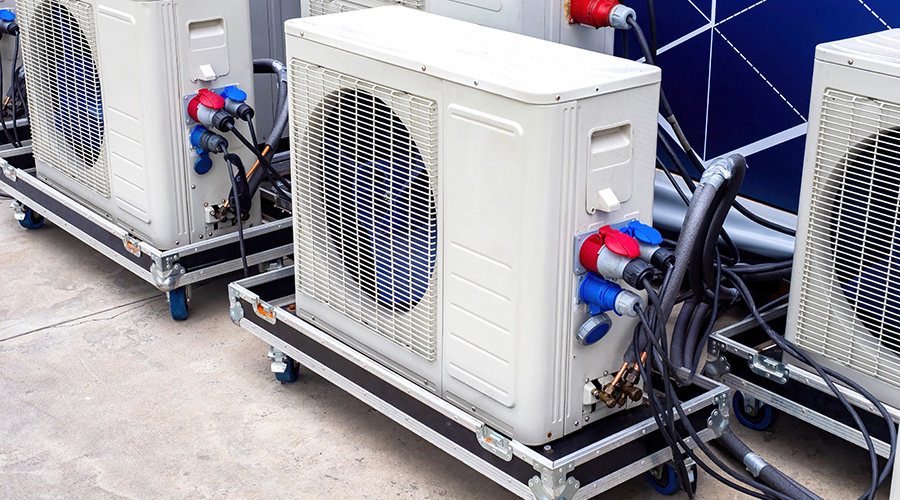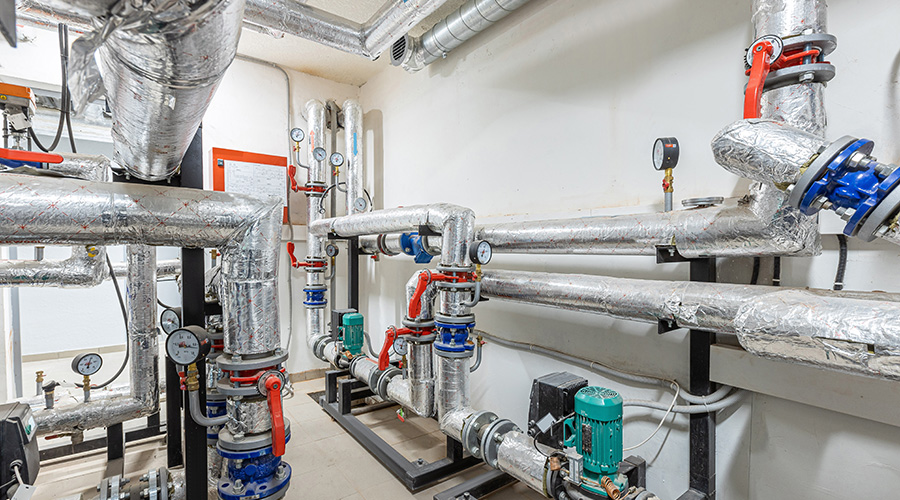Choosing Energy-Efficient Mechanical Equipment Reduces Noise
Another way to reduce noise and vibration transmission is to ensure that the mechanical equipment is selected for the most efficient operation as possible and that the systems considered are generally energy-efficient. This may mean considering equipment that is not necessarily the lowest first-cost, but may have a low lifecycle cost. Additionally, a mechanically efficient design is a sustainable and LEED-friendly design.
It is also possible to reduce noise and vibration transmission by avoiding packaged rooftop units. Packaged units produce more significant levels of vibration and higher levels of noise than a standard air handling unit because of the compressor and condenser section. For example, a packaged unit installed above an executive’s office on the top floor of an office building would require many acoustical upgrades to isolate sound and vibration. A smarter choice would be a traditional air-handling unit located in a mechanical room far from the executive’s office.
Other energy-efficient equipment alternatives can be good for noise control design. Alternate technologies to consider may include chilled beams or displacement ventilation, where less airflow is required to cool the space than traditional methods. For large equipment, this may include considering renewable energy sources to reduce the load on a chiller or heating plant — say, solar thermal panels. Otherwise, be sure to select fans in the air-handling unit at an efficient operating point. For specifying engineers, this may mean choosing a larger fan than may be initially recommended by the fan manufacturer’s selection program.
Choosing efficient supply and return fans reduces the overall discharge noise from the fan and consequently the noise that is transmitted into the space. If the fan discharge noise contributes to a louder sound pressure level in the listening space than desired, silencers should be considered. Plan to keep pressure drop through the silencers low; if pressure drop is high, the silencers contribute their own source of noise to the space.
Another important source of noise to consider is the noise that is generated by the velocity of air flowing through ductwork. Fast-moving, turbulent air generates noise in addition to the noise created by mechanical equipment. Velocities must be kept in check — acoustical consultants can advise mechanical engineers on the specifics. Velocity restrictions can be relaxed somewhat if suitable sound-absorbing internal ductwork liner is used.
As noted above, best practice noise control design is much more difficult to adopt later on in the project or in an existing building. In existing buildings with HVAC equipment, the acoustical solution is often limited to architectural upgrades if the mechanical unit cannot be replaced or if the noise-generating equipment cannot be moved. These solutions are generally less effective than solutions that are possible earlier in the design of a new project.
When good noise control principles are considered early in the project design, the overall project acoustics are improved and can be implemented with less cost and greater ease.
Nicole Scott Cuff, PE, LEED AP BD+C, is a consultant in acoustics at Acentech Inc., a multi-disciplinary acoustics, audiovisual systems design, and vibration consulting firm. She can be reached at ncuff@ACENTECH.com.
Related Topics:













